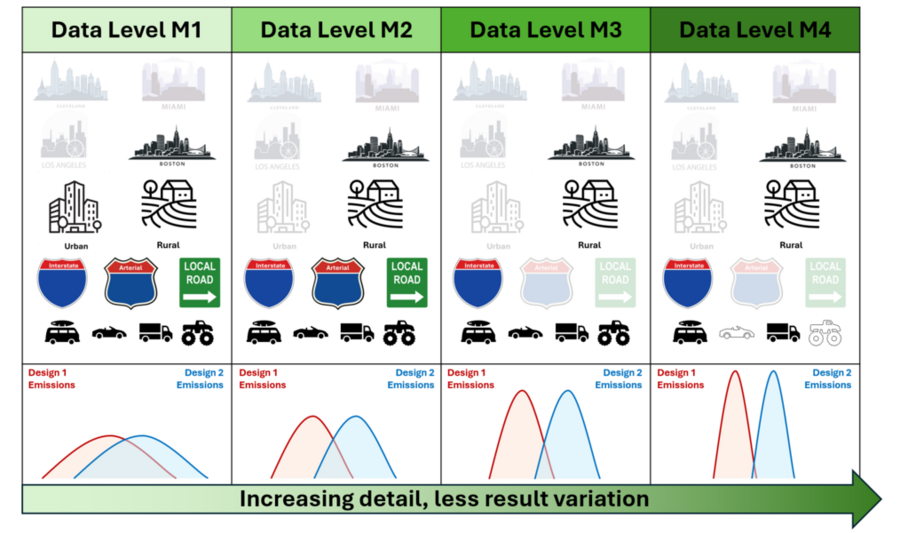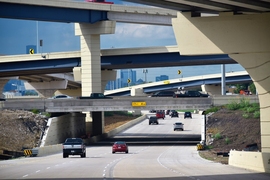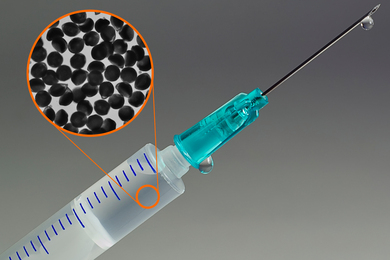Pavements form the backbone of our built environment. In the United States, almost 2.8 million lane-miles, or about 4.6 million lane-kilometers, are paved. They take us to work or school, take goods to their destinations, and much more.
To secure a more sustainable future, we must take a careful look at the long-term performance and environmental impacts of our pavements. Haoran Li, a postdoc at the MIT Concrete Sustainability Hub and the Department of Civil and Environmental Engineering, is deeply invested in studying how to give stakeholders the information and tools they need to make informed pavement decisions with the future in mind. Here, he discusses life-cycle assessments for pavements as well as research from MIT in addressing pavement sustainability.
Q: What is life-cycle assessment, and why does it matter for pavements?
A: Life-cycle assessment (LCA) is a method that helps us holistically assess the environmental impacts of products and systems throughout their life cycle — everything from the impacts of raw materials to construction, use, maintenance, and repair, and finally decommissioning. For pavements, up to 78 percent of the life-cycle impact comes from the use phase, with the majority stemming from vehicle fuel use impacted by pavement characteristics, such as stiffness and smoothness. This phase also includes the sunlight reflected by pavements: Lighter, more reflective pavement bounces heat back into the atmosphere instead of absorbing it, which can help keep nearby buildings and streets cooler. At the same time, there are positive use phase impacts like carbon uptake — the natural process by which cement-based products like concrete roads and infrastructure sequester CO2 [carbon dioxide] from the atmosphere. Due to the sheer area of our pavements, they offer a great potential for the sustainability solution. Unlike many decarbonization solutions, pavements are managed by government agencies and influence the emissions from vehicles and surrounding buildings, allowing for a coordinated push toward sustainability through better materials, designs, and maintenance.
Q: What are the gaps in current pavement life-cycle assessment methods and tools and what has the MIT Concrete Sustainability Hub done to address them so far?
A: A key gap is the complexity of performing pavement LCA. Practitioners should assess both the long-term structural performance and environmental impacts of paving materials, considering the pavements’ interactions with the built environment. Another key gap is the great uncertainty associated with pavement LCA. Since pavements are designed to last for decades, it is necessary to handle the inherent uncertainty through their long-term performance evaluations.
To tackle these challenges, the MIT Concrete Sustainability Hub (CSHub) developed an innovative method and practical tools that address data intensity and uncertainty while offering context-specific and probabilistic LCA strategies. For instance, we demonstrated that it is possible to achieve meaningful results on the environmentally preferred pavement alternatives while reducing data collection efforts by focusing on the most influential and least variable parameters. By targeting key variables that significantly impact the pavement’s life cycle, we can streamline the process and still obtain robust conclusions. Overall, the efforts of the CSHub aim to enhance the accuracy and efficiency of pavement LCAs, making them better aligned with real-world conditions and more manageable in terms of data requirements.
Q: How does the MIT Concrete Sustainability Hub’s new streamlined pavement life-cycle assessment method improve on previous designs?
A: The CSHub recently developed a new framework to streamline both probabilistic and comparative LCAs for pavements. Probabilistic LCA accounts for randomness and variability in data, while comparative LCA allows the analysis of different options simultaneously to determine the most sustainable choice.
One key innovation is the use of a structured data underspecification approach, which prioritizes the data collection efforts. In pavement LCA, underspecifying can reduce the overall data collection burden by up to 85 percent, allowing for a reliable decision-making process with minimal data. By focusing on the most critical elements, we can still reach robust conclusions without the need for extensive data collection.

To make this framework practical and accessible, it is being integrated into an online LCA software tool. This tool facilitates use by practitioners, such as departments of transportation and metropolitan planning organizations. It helps them identify choices that lead to the highest-performing, longest-lasting, and most environmentally friendly pavements. Some of these solutions could include incorporating low-carbon concrete mixtures, prioritizing long-lasting treatment actions, and optimizing the design of pavement geometry to reduce life-cycle greenhouse gas emissions.
Overall, the CSHub’s new streamlined pavement LCA method significantly improves the efficiency and accessibility of conducting pavement LCAs, making it easier for stakeholders to make informed decisions that enhance pavement performance and sustainability.









